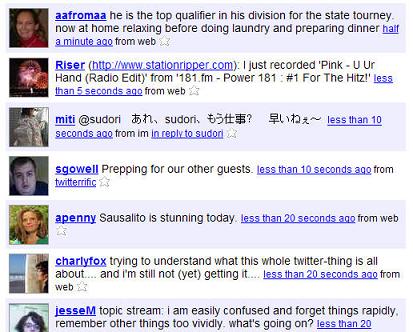It’s been almost a year since I marveled over the ingenuity of director Kevin Smith. As part of the theatrical release of his movie Clerks II, Smith released a free director’s commentary on iTunes, in Podcast form.* Back then I called it a smart way to get his core audience back in the theaters. I considered it one of the most innovative ways yet to monetize the podcast. Television comedian Mike Nelson has taken a more direct approach. He has created what I can only describe as the first ever movie/podcast mash-up. And it promises to make him and his partners rich.
The mash-up, which was first coined to describe what DJs create when they mix extremely divergent musical tracks, has moved to the “Web 2.0 blending” of different programs, such as Google Maps and Craigslist in this real estate mash-up. Now, with RiffTrax, Mike Nelson and his fellow satirists are creating podcasts that you can buy and blend in your living room, with the DVD they are lambasting.
Think of a RiffTrax podcast as a commentary track, as you’d find on a DVD, featuring the director and a few actors, and maybe the script writer. Now imagine the film they’re talking over (as in a voice-over) is worthy of ridicule, and all parties are very witty and have been injected with sodium pentathol to loosen their tongues.
Okay, that’s not very helpful analogy. Actually, what could help me explain this idea is if you, like me, were a fan of the long-running, now-defunct Mystery Science Theater 3000 television show. That’s because most of the RiffTrax cast members are from that show.
A low-budget, low-margin production, Mystery Science Theater 3000 (lovingly known as MST3K to fans) never made Nelson or his cohorts much money. RiffTrax is also low-budget, but selling for $.99 to $3.99 each, these podcasts will become very profitable very quickly. I also admire the fact that the venture side-steps any copyright problems, because of its do-it-yourself nature. You must download them to your MP3-player, and play them on a stereo, simultaneous to viewing the movie. You make the mash-up, not them. Brilliant.
I was incorrect a year ago when I predicted that Kevin Smith would sell a lot more popcorn by driving his audiences back to the theaters, earbuds firmly in place, to listen to his commentary as they watch the film for a second time. So you’d think I would be a little less free with my wild predictions. But hey, I know MST3K fans. Heck, I am one.
Fans like me will try this, and some will get hooked. Just as happened with the series, RiffTrax will inspire parties, formed around televisions in dorm rooms and family rooms across America. Word will spread, and this Long Tail sensation will become a mainstay for those with a wide streak of geek and a taste for droll humor — mostly G-rated at that.
RiffTrax will deliver the Holy Grail: A truly profitable podcast. It will also spur spin-offs, to appeal to other niches, such as satires to popular television series, now on DVD. But that’s well down the road. As for the short term, I can only say with certainty that my first RiffTrax party will take place within weeks.
* A half-century before the inventiveness of Kevin Smith, William Castle found similar ways to add new dimensions to the film-going experience, in the cheapie thrillers he cranked out. For instance, for The Tingler, Castle placed electric buzzers under theater seats, and zapped people’s butts during scenes where the audience was supposed to jump in horror. I’m sure it produced screams, but directors of the time, like Alfred Hitchcock, were using less convoluted techniques.
